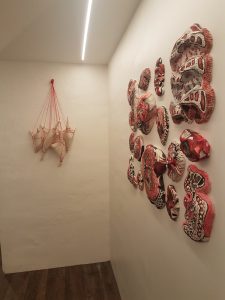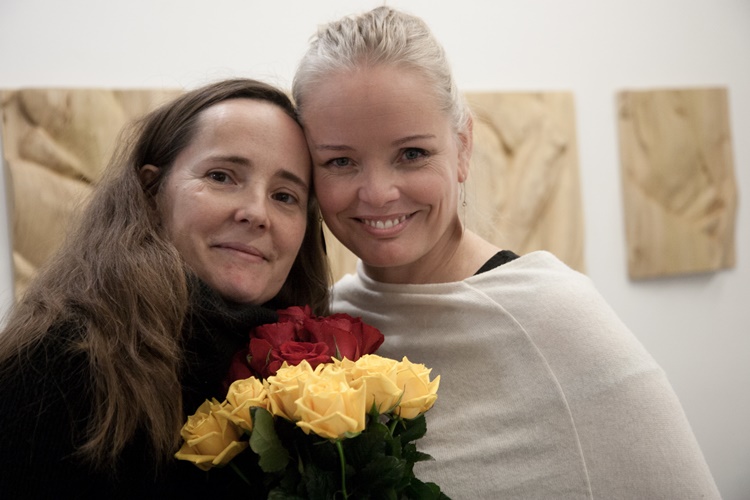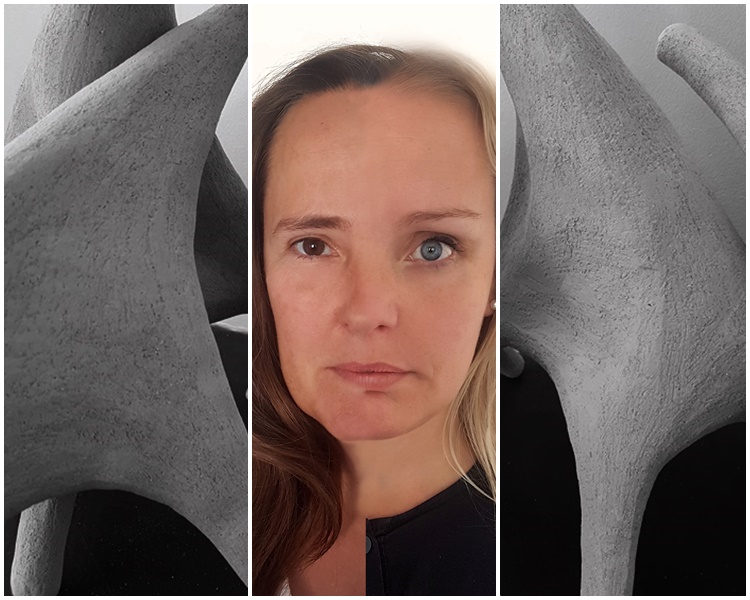The art exhibition Uppbrot opens today, culture night, Saturday August 19, at Gallerí 78, on Suðurgata 3 at 17pm. GayIcland talked to the artists behind it, Sigga (Sigríður Helga Hauksdóttir) and Madda (Margrét Óskarsdóttir), about their work, collaboration and how they are protesting the male dominant art world and breaking out of society’s conformed gender roles with the help of their alter ego, Sigmar Stórholt.

First of all, where does the name Uppbrot come from?
“The name of the exhibition Uppbrot has a double meaning for us. The word itself literally means to break up the routine. But it also refers to how we like to work with fragments to make up new elements,” says Madda who along with Sigga was fully engaged in preparing the exhibition when GayIceland contacted them.
Who is Sigmar Stórholt?
“SigMar is an anagram of the first three letters of both our names and Stórholt is our street. This name is a symbol for our collaboration but Sigmar has taken on a character of his own,” Madda explains.
“We often refer to him as a real person, discussing his work and the differences that set him apart from ourselves,” Sigga adds when asked further about how Sigmar came to life.
“Then after some time talking about him we tried to imagine what kind of a person he would be like. We jokingly took some pictures of us, combined them and took those images to some app to get a male version. The result was just hilarious, as he turned out as a middle-aged bald man.” Madda says however in jest that she refused to be bald, so they will not be displaying that photo. “Sigmar is still under construction,” they add.
Is there a reason for your alter ego being male?
“Creating a male alter ego frees us from the expected role of the “nice girls” inflicted on us by ourselves and others. Where uncomfortable things and rocking the boat are a taboo and seen as troublesome. We are now for example exploring the notion of our own bodies, and perhaps existence,” says Madda. “Why on earth are we so repulsed by our own bodies if seen in certain light?” she asks. “Beauty can be found in unexpected places and we are playing with our own perception of it and finding beauty in perhaps unappealing things.”
“Why on earth are we so repulsed by our own bodies if seen in certain light?Beauty can be found in unexpected places and we are playing with our own perception of it and finding beauty in perhaps unappealing things.”
Secondly, Sigga adds that creating Sigmar, a male figure, is also a kind of protest to the over dominating male presence in art history. “We feel that still today you have to be a male to get the same opportunities. Growing up, both of us became deeply disappointed when we discovered the extent of female roles handed to us by society. Both of us wished at one point that we were male. We are proud to be women but we don’t always like the role we are supposed to play.”

In what way are you breaking up your routines and stepping out of your comfort zones with this collaboration and how has your alter ego, Sigmar Stórholt helped you in that process?
“In a way this alter ego allows us to let go of our own individual artist ego and go with the free flow of collaboration that has no limits,” says Sigga. He frees us from our set ways and challenges our thinking and helps us to step out of our comfort zone. As individual artists, our style and approach is very different so new things are bound to happen when we combine forces.”
For Uppbrot you are working with similar elements as in your last exhibition back in December 2016, called Flækjur. How has your work evolved since then?
“In our last exhibition we were working with the concept of Gestalt law or principle of grouping, exploring the notion of how fractions and missing parts create a perception of a familiar reality that may or may not exist,” Madda explains. “The human body was our subject matter last time and it still is but now we also go under the skin.”
You have been working side by side for a few years now. How come you decided to finally collaborate as artists?
“Last autumn, we were invited to exhibit together and we decided to use that opportunity to combine both our efforts. That collaboration was a revelation for us and opened up a whole new way of working, where one plus one equaled a lot more than just two,” says Madda
When finally asked about why they chose Gallerí 78 for their exhibition, Sigga says it is a logical choice since they are “partners in life as well as in work.”



